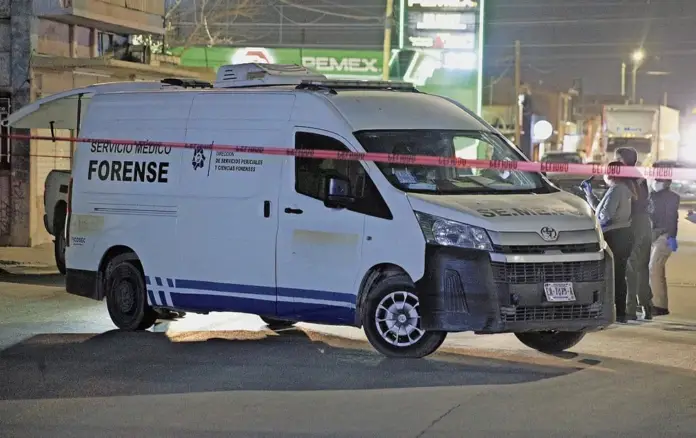Despite the ongoing drug war in Sinaloa due to the fracturing of its historically dominant cartel, Chihuahua recorded 455 executions in the first quarter of this year, 13 percent more than the 402 reported in the neighboring state.
Recently updated data from the National Public Security System (SNSP) show that the state of origin of the Sinaloa Cartel or Pacific Cartel saw a 224 percent increase in the number of intentional homicide victims, while in Chihuahua the incidence fell by 7.7 percent.
Despite the triple-digit increase in the state, disputed between various factions of the criminal organization of the now imprisoned Joaquín “El Chapo” Guzmán and Ismael “Mayo” Zambada, Sinaloa has not reached the absolute number of victims recorded in Chihuahua, which averages over 150 cases per month.
In Sinaloa, during the first quarter of 2022, 110 people were victims of intentional homicide, while in Chihuahua, 411 were recorded, and nationwide, the number reached 7,328, according to official information consolidated by the SNSP.
The year 2023 brought widespread increases across the country, reaching 7,488 victims of executions; in Chihuahua, there were 560, and in Sinaloa, the number rose to 136 cases, the highest in that period in Chihuahua and also in the country, but not in the neighboring Pacific state.
For last year, in the first quarter, the number of victims in Sinaloa decreased to 124, while in Chihuahua, it fell to 493; nationwide, 7,160 intentional homicides were recorded, the majority of which were attributed to organized crime groups.
But it was precisely in 2024, on July 25, that Ismael “El Mayo” Zambada, founder of the Sinaloa Cartel, and Joaquín Guzmán López, son of “El Chapo,” were arrested upon landing in El Paso, Texas, in a controversial operation by the United States justice system, which did not inform the Mexican government of the incident until it was made public.
The arrest of both individuals, now prosecuted by the US justice system, intensified tensions between the main factions of the Sinaloa Cartel: “Los Mayos,” a group made up of cells subordinate to Zambada; and “Los Chapitos,” led by Iván Archivaldo Guzmán Salazar, Jesús Alfredo Guzmán Salazar, and Joaquín Guzmán López, who, in turn, had taken control of a large part of the criminal organization since the arrest and extradition of their father, “El Chapo.”
These internal groups, according to Sinaloa media reports, had already been at odds since Guzmán Loera’s capture, but tensions were kept under control due to negotiations between their leaders, Zambada, recognized as the founder by “El Chapo’s” sons, and the leader of “Los Chapitos.”
But it was the fall of both leaders, in what was possibly a kidnapping, an illegal US intervention, a betrayal by “Los Chapitos,” or a voluntary surrender—which remains unknown to this day—that triggered a war between the factions, which intensified between the last quarter of last year and the beginning of 2025.
Thus, in the first three months of this year, executions in Sinaloa increased by 224 percent compared to the same period in 2024, reaching 402 cases, an average of 134 victims per month, far higher than the records of all previous years.
In Chihuahua, on the other hand, intentional homicides in the first quarter fell to 455, a 7.7 percent decrease compared to the cases recorded in the same period last year.
Despite the decrease, the figure is still higher than that recorded in Sinaloa, in part because the state has also been affected, especially in the capital and some parts of the mountainous region, by the internal confrontation within the same criminal organization.
Nationally, the number of executions also showed a drop of just over five percent, reaching 6,799 victims, the lowest number of cases in the period.
In this period starting in 2025, the states with the highest number of executions, in addition to Chihuahua and Sinaloa, are Guanajuato, with 1,056 victims; Baja California, with 494; State of Mexico, with 463; Jalisco, with 364; Michoacán, with 359; Sonora, with 356, and Guerrero, with 324.

Source: diario




